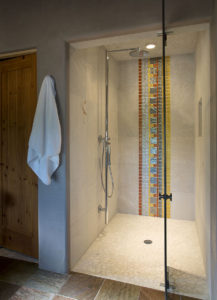Follow-The-Bouncing-Ball

Last month, we settled the budget. Now, it’s time to begin taking the story we want to tell from somewhere in our dreams and spreadsheets to the real world. It’s construction time. This is the part where everything can go wrong, everything can go right, or more typically, a little bit of both. What are some key ingredients for making this critical stage go right? How can you keep the project on schedule and budget? What are possible opportunities for making this process a gratifying experience?
Good communication is paramount for the success of interior design projects. There are going to be questions that need answering, and issues that will need addressing. Rather than have these flying back and forth, here and there, it’s best to have a single person whose job it is to gather these and put them to the team in an organized manner. This person can be the client, the general contractor, the interior designer, or anyone else that has a stake in the project and the expertise to ensure issues and questions get resolved.
Weekly meetings are also a no-brainer. Invariably, everyone will have questions, and it is far more fruitful than not to discuss them in person to ensure that the construction drawings and/or specifications are interpreted correctly. It is possible, and not all that unusual, that one person’s interpretation of ‘center the fixture in the room’ can be different from another’s. Regular meetings can prevent dreaded thousand-long email chains, and good note keeping during the meetings can keep out-of-town clients or other key players apprised of what’s going on.
Obviously, we can’t escape email, but an important task for everyone is to make sure that all relevant parties are copied on all relevant discussions. “Reply all” is your friend and can stop potentially very expensive mistakes.
Another key for a smooth construction project is the ability to see the future. Sort of. For example, if the stain for a cabinet is listed as ‘to be determined’ and the cabinets have a long lead time, it’s best to turn that TBD into a firm decision sooner rather than later, so that the cabinets are ready to be ordered. When getting that need-a-decision-this-minute call, the options tend to be slim-to-none and this puts unnecessary pressure on the recipient of the call (and can cost significant money)
Many general contractors offer a regularly updated online project schedule to team members. This is an invaluable tool both for seeing how the overall schedule is developing, but also for keeping an eye on what needs to be done next.
Keep in mind that while a good design process really works, nothing is perfect. The best and most detailed drawings show nothing more than intention (and assume things like an ideal built environment). Our organic New Mexico walls, for instance, often require adjustments for tile layouts or cabinetry installations because they’re out of square, bowed, or bulging. Flexibility is key and allowing for the unknown can yield some great design moments (and keep the adrenaline under control).
Next month, tune in to see designs coming to fruition and glimmers of greatness.


